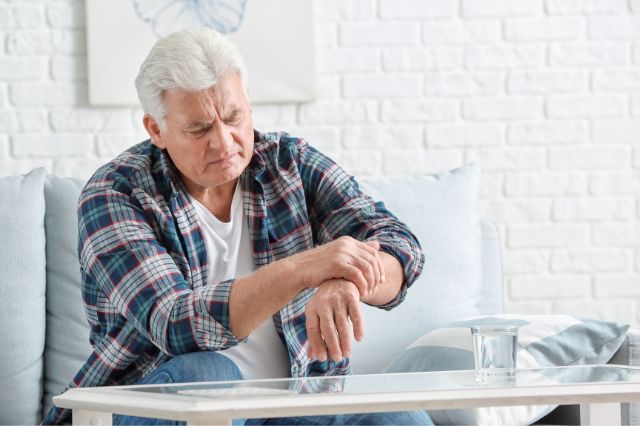Parkinson’s is not a one-size-fits-all disease. Symptoms can vary widely from person to person, which makes diagnosis and treatment challenging. Consider the tremors, which are often the most visible symptom. They can range from a slight shake in a hand to more severe uncontrollable movements.
Yet, for some, tremors are not even present. Cognitive changes, such as trouble with memory or decision-making, can also be part of the Parkinson’s journey, though they may not be as well recognized as the physical symptoms. It’s a disease that evolves over time, often starting with subtle symptoms that gradually intensify. This progression can be scary, leaving many to wonder, “What will happen next?”
Personal Stories and Experiences
Every individual’s journey with Parkinson’s is unique. For example, Emily, who was diagnosed in her early 40s, talks about the stigma and misconceptions she faces, especially about being ‘too young’ for Parkinson’s. Then there’s Mark, who has turned to art to express himself as his speech becomes more challenging. Caregivers, too, have their own stories of resilience and adaptation. They talk about the learning curve in understanding Parkinson’s and how they’ve had to become advocates for their loved ones.
These stories highlight the need for more awareness and education about Parkinson’s. They remind us that behind every diagnosis is a person with hopes, fears, and a life story that goes beyond their medical condition. The emotional rollercoaster — hope, denial, acceptance — is a shared but unique experience for each person touched by Parkinson’s.
Medical and Therapeutic Advancements
Did you know that Parkinson’s treatment is not just about managing symptoms but also about improving quality of life? This is where personalized medicine comes into play. Specialists are now focusing on treatments tailored to individual symptoms and disease progressions.
There’s also a growing emphasis on holistic care, which includes mental health support, as mental well-being is crucial for people with Parkinson’s. The integration of technology in treatment, like smartphone apps to track symptoms or telemedicine for easier access to care, is another forward step.
On the research front, scientists are exploring the gut-brain connection in Parkinson’s, offering potential new avenues for treatment. Clinical trials for various drugs and therapies are ongoing, giving hope that new breakthroughs are on the horizon. It’s a dynamic field, and each discovery brings us closer to understanding and better managing Parkinson’s.
Moreover, advancements in imaging techniques are providing deeper insights into the Parkinson’s-affected brain, aiding in more accurate diagnoses and monitoring of the disease progression. Rehabilitation therapies, including physical, occupational, and speech therapy, are also evolving, becoming more tailored to address the specific challenges faced by Parkinson’s patients.
The role of diet and nutrition in managing Parkinson’s is receiving increased attention, with research suggesting that certain dietary approaches may help alleviate symptoms. Lastly, the patient community plays a crucial role in advancements, as their participation in clinical trials and feedback on treatments drive innovation and improvements in care strategies.
The Role of Medical Marijuana in Parkinson’s Treatment
The discussion surrounding the use of medical marijuana in treating Parkinson’s disease is rapidly gaining momentum. Scientific research is increasingly focusing on how compounds in cannabis, such as CBD and THC, affect the nervous system. Intriguingly, some studies suggest that these compounds may not only alleviate symptoms but could also have neuroprotective properties.
Navigating the legal aspects of medical marijuana use can be complex, particularly when considering state-specific regulations. In West Virginia, for example, obtaining a WV marijuana card is a necessary step for legal access, presenting both a legal and logistical challenge for patients. The stigma around the use of marijuana, even for medicinal purposes, often concerns patients.
Therefore, education is vital in understanding the effectiveness, risks, and legal requirements of using medical marijuana. It’s imperative for those considering this treatment option to engage in open discussions with healthcare providers who are well-versed in both Parkinson’s disease and the implications of cannabis use. Importantly, incorporating medical marijuana into treatment should be viewed as one component of a comprehensive care strategy.
A key challenge in using medical marijuana for Parkinson’s is the variability in individual responses. Some patients may experience considerable relief, while others may see less benefit, underscoring the importance of customized treatment plans. Determining the correct dosage and form of medical marijuana requires careful oversight by healthcare professionals.
Additionally, it is crucial to consider how medical marijuana might interact with other Parkinson’s medications, highlighting the need for a well-coordinated treatment plan. The ultimate objective is to ensure that each patient’s regimen, including the option of a WV marijuana card for medical cannabis, is safe, effective, and specifically tailored to their individual health needs and circumstances.
Navigating Healthcare and Support
The healthcare journey for Parkinson’s patients is often a marathon, not a sprint. It involves regular monitoring, medication adjustments, and sometimes difficult decisions about treatment options. Access to quality care is a significant issue, especially for those in rural areas or with limited healthcare options. Financial burdens, insurance complexities, and navigating the maze of healthcare services can add to the stress. But there’s good news too.
Numerous organizations and support groups offer guidance, from helping understand medical jargon to providing emotional support. Online forums and social media groups have become lifelines for many, offering a space to share experiences and tips. It’s also important to celebrate the small victories — a good day, a successful treatment adjustment, a moment of joy despite the challenges.
Above all, fostering a strong support network — family, friends, healthcare providers, and fellow patients — can make all the difference in managing life with Parkinson’s.
Conclusion
In wrapping up, let’s remember that Parkinson’s disease while challenging, is a journey shared by millions. Each person’s experience adds to our collective understanding and empathy. Through continuous medical advancements, supportive communities, and increased awareness, we can change the narrative of this silent struggle. It’s about more than just managing a condition; it’s about embracing life with all its complexities.
Let’s keep pushing for better treatments, more accessible care, and a deeper understanding of Parkinson’s disease. And let’s do it together, as a community committed to supporting each other every step of the way.



Leave a Comment